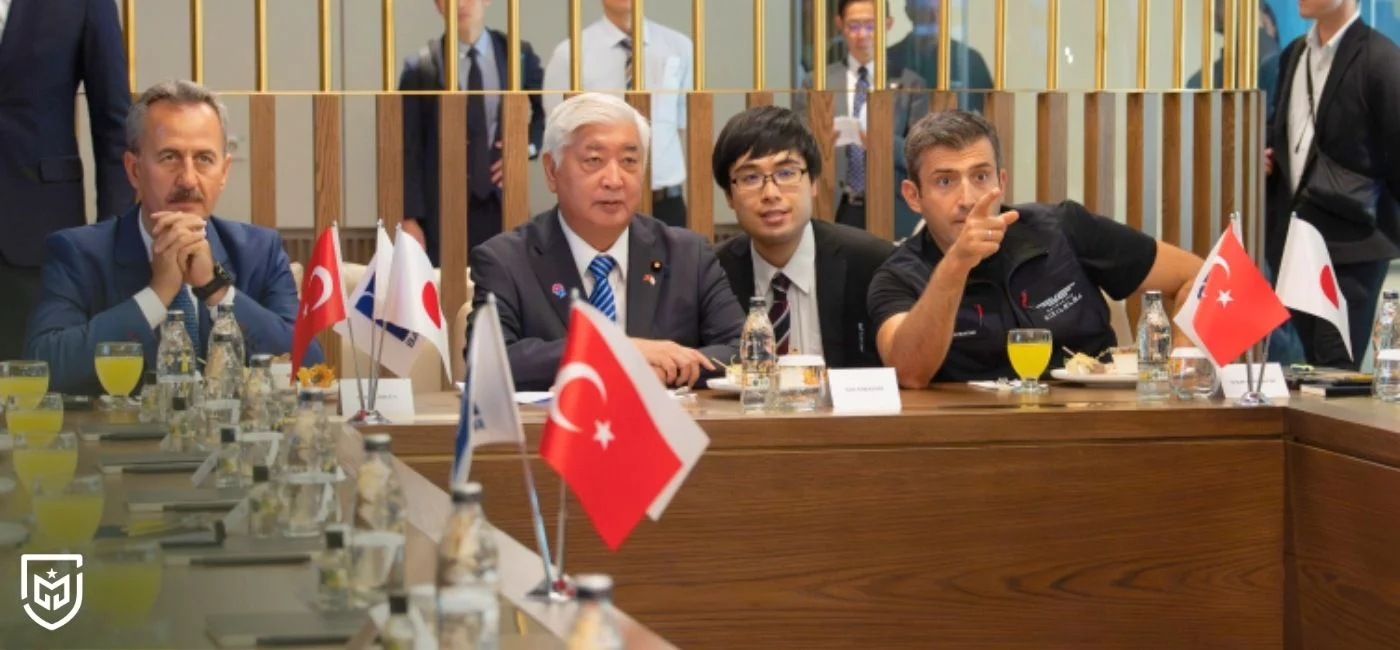

BREAKING NEWS

A new strategic phase is unfolding between Türkiye and Japan, centered on defense industry cooperation. The recent visit of Japanese Defense Minister Gen Nakatani—the first of its kind at ministerial level—has opened the door to institutional dialogue, technology exchange, and joint projects between the two nations. Following his meeting with Minister of National Defense Yaşar Güler in Ankara, Nakatani and his delegation visited key Turkish defense facilities, including Istanbul Shipyard Command, Baykar, and TUSAŞ (Turkish Aerospace Industries). These visits reflected a comprehensive approach covering naval, aerial, and platform integration technologies.
Defense and Maritime Expert Kozan Selçuk Erkan emphasized that the Japanese delegation was composed of senior officials with real decision-making authority in procurement and technology, signaling a serious intention beyond exploratory talks. According to Erkan, TUSAŞ’s AKSUNGUR UAV, with its long-endurance and high-altitude capabilities, represents an ideal platform for Japan’s island geography—providing superior reconnaissance and surveillance capacity. He also pointed to Japan’s aging Kawasaki T-4 jet trainers and suggested that HÜRJET, Türkiye’s new generation jet trainer, likely caught the attention of the Japanese team. “Japan’s domestic efforts are ongoing, but they may not have the luxury of time—turning to HÜRJET could be a practical and strategic move,” Erkan noted.
The spotlight, however, remains firmly on Turkish UAVs. Japan has long shown interest in the Bayraktar TB-2, but shifting regional security dynamics have now made acquisition a priority. Reports indicate that Japan has allocated nearly $670 million for UAV procurement, and Türkiye’s latest Bayraktar TB-3, with its ship-based take-off and landing capability, perfectly aligns with Japan’s maritime needs. As Japan converts two of its helicopter carriers into light aircraft carriers, TB-3 could serve as the only operationally suitable UAV capable of launching from their decks—an advantage over comparable U.S. systems, which are larger and costlier.
At the Istanbul Shipyard Command, Minister Nakatani inspected Türkiye’s national aircraft carrier model and symbolically performed a welding ceremony, underscoring the intent for naval collaboration. At Baykar and TUSAŞ, discussions focused on autonomous flight software, data links, command-and-control systems, aerospace structures, and certification processes. Experts suggest that cooperation in supply chains, testing, certification, and maintenance could yield tangible medium-term benefits for both nations.
Strategically, Japan’s strength in high-precision manufacturing and advanced production technologies could help accelerate Türkiye’s industrial capabilities, while Türkiye’s proven UAV systems, modular architectures, and maritime operational experience provide valuable solutions to Japan’s island-based defense requirements. This emerging “win-win partnership” model—built on co-development, technology exchange, and operational interoperability—positions Türkiye and Japan for a lasting and mutually beneficial defense relationship.
Post Comment
Comments
No comments yet.
Related News
ASELSAN General Manager Akyol: “We have paved the way for achieving what was thought impossible in the world”
Satellite Communication System Tailored for Equatorial Missions Empowers Türkiye’s National UAVs
U.S. MQ-28 Test Overshadowed by KIZILELMA’s Historic Air-to-Air Missile Success
Leonardo Signs Multi-Year Support Agreement for Italian C-27J Spartan Fleet
Ukraine Officially Receives Homegrown Flamingo Long-Range Cruise Missiles
Turkey–Hungary Defense Cooperation Expands: Gidran Production and New Joint Projects Accelerate
ANKA III Achieves Major Milestone: Autopilot Tests Successfully Completed
New Era in Turkey–Egypt Defense Cooperation: AKREP and HAMZA-1 Unveiled at EDEX 2025